Abstract
This paper describes the effect of oral metrifonate, an organophosphorus cholinesterase inhibitor, on Schistosoma haematobium infections.
The methodology of initial studies in hospital patients and 3 field trials in schoolchildren, using spaced doses ranging from 5 mg to 15 mg per kg of body-weight is detailed.
The expected fall in plasma cholinesterase was confirmed. No major side-effects were encountered and minor symptoms were associated with high doses only.
The optimum dose was 7.5 mg per kg, given once every 14 days or once monthly to a maximum of 3 doses if necessary. About two-thirds of patients were cured after 1 or 2 doses, but some 10% of these relapsed within 6 months of treatment. In 2 trials of this dose, cure rates of 71% and 79% were obtained.
The authors conclude that metrifonate is a useful addition to oral schistosomicides for the treatment of S. haematobium infections in children, but suggest that more trials with spaced dose regimes are indicated and that further experimental studies are needed to define its mode of action.
Full text
PDF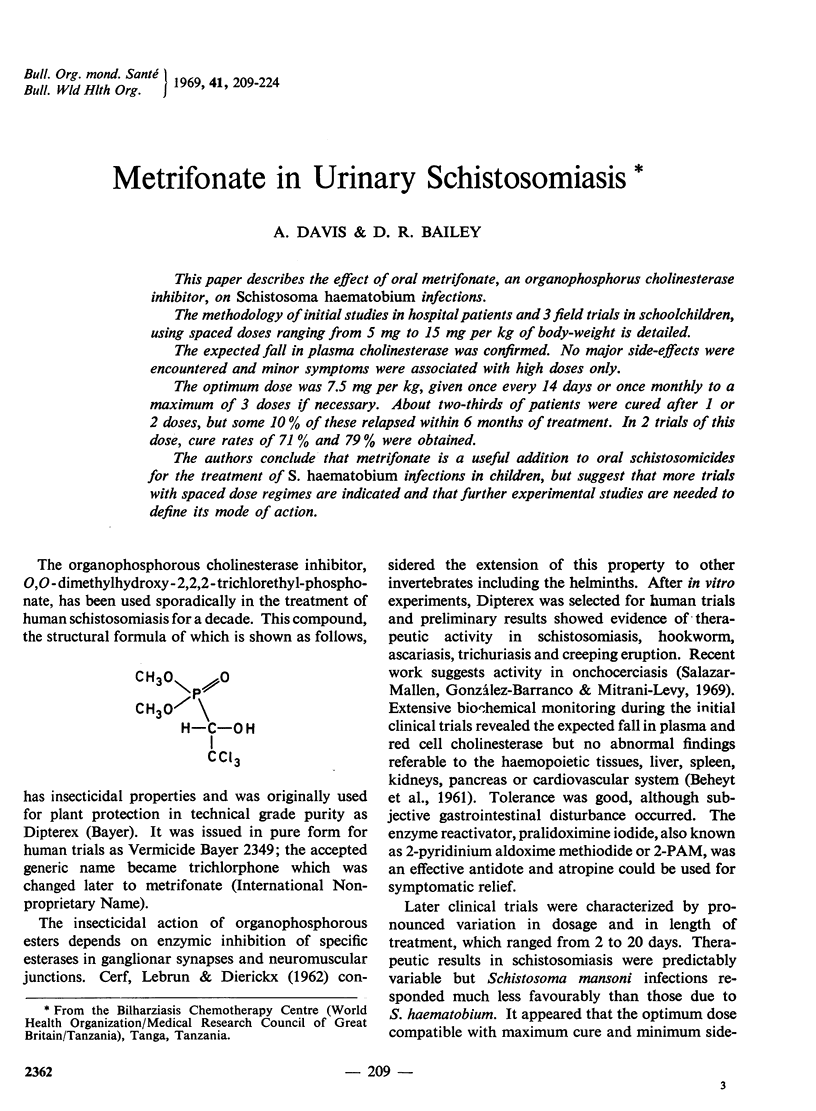
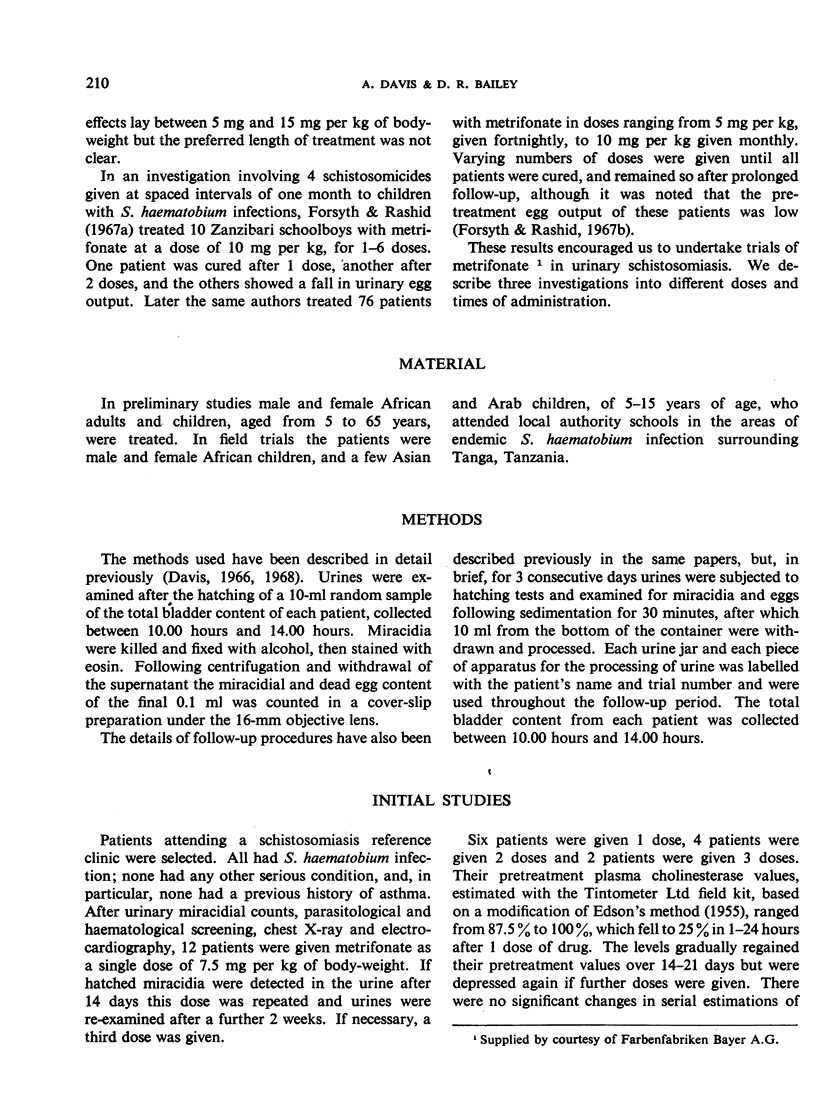
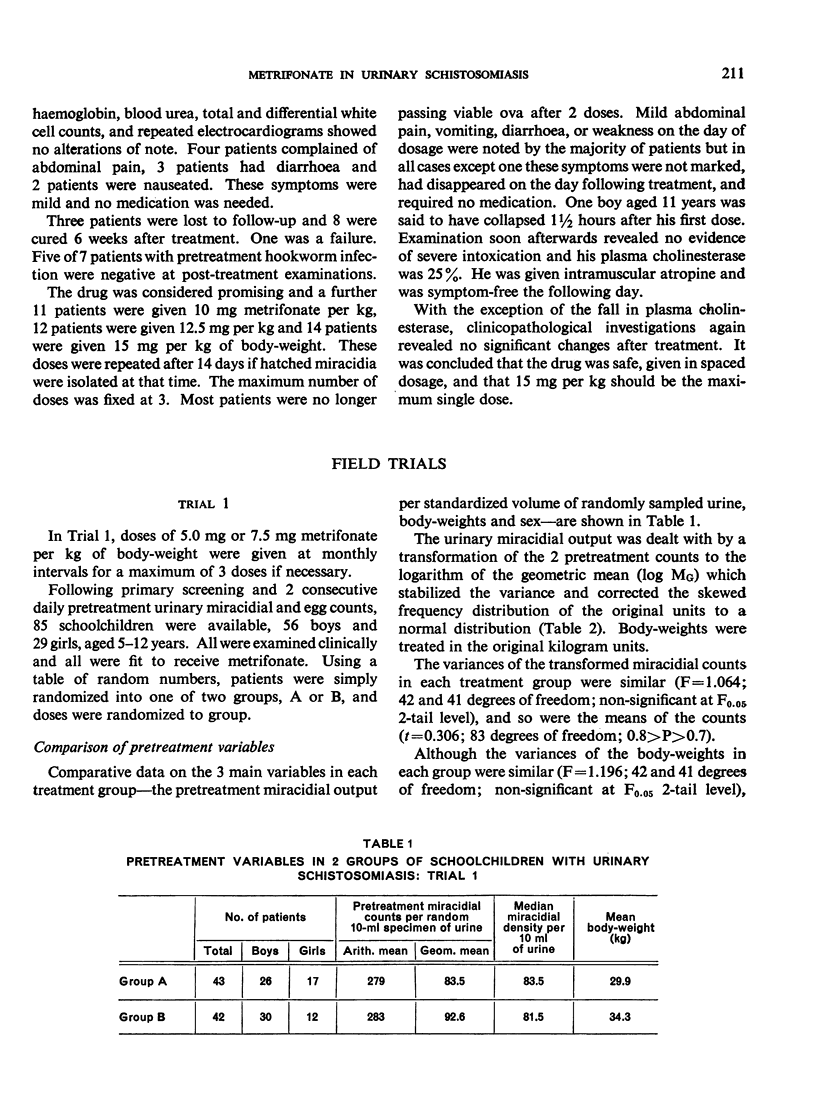
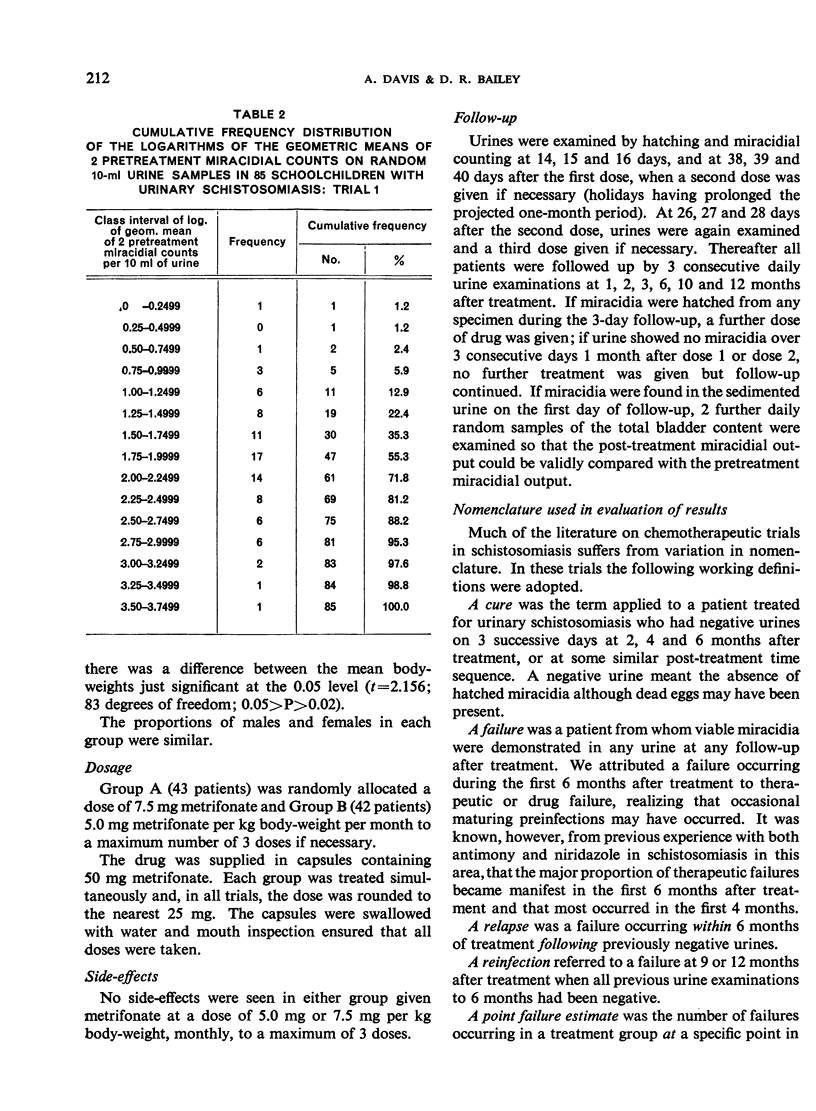
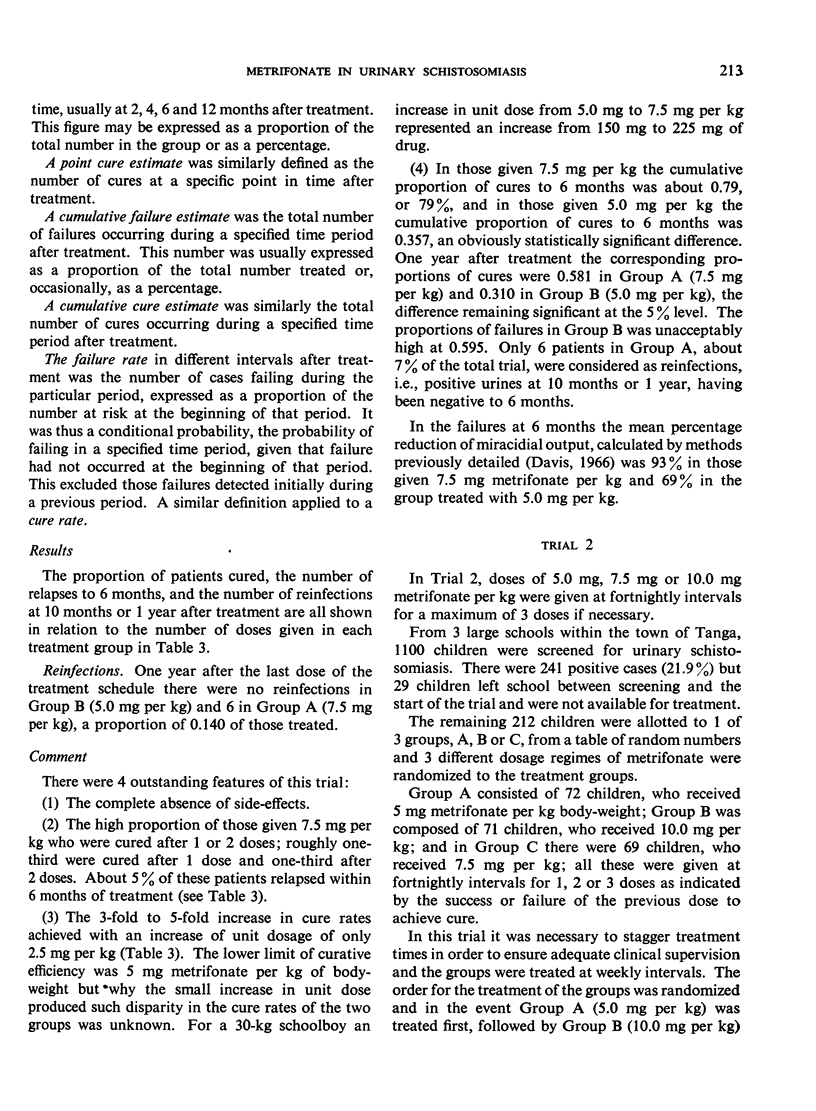
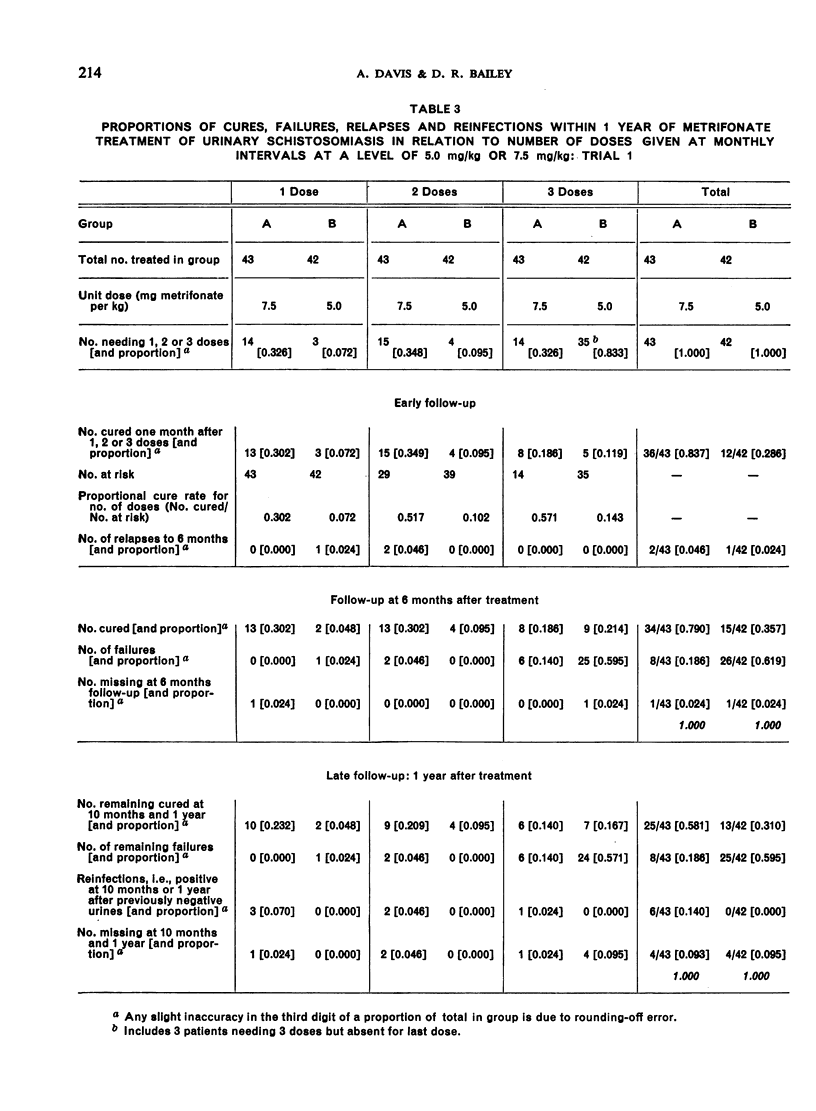
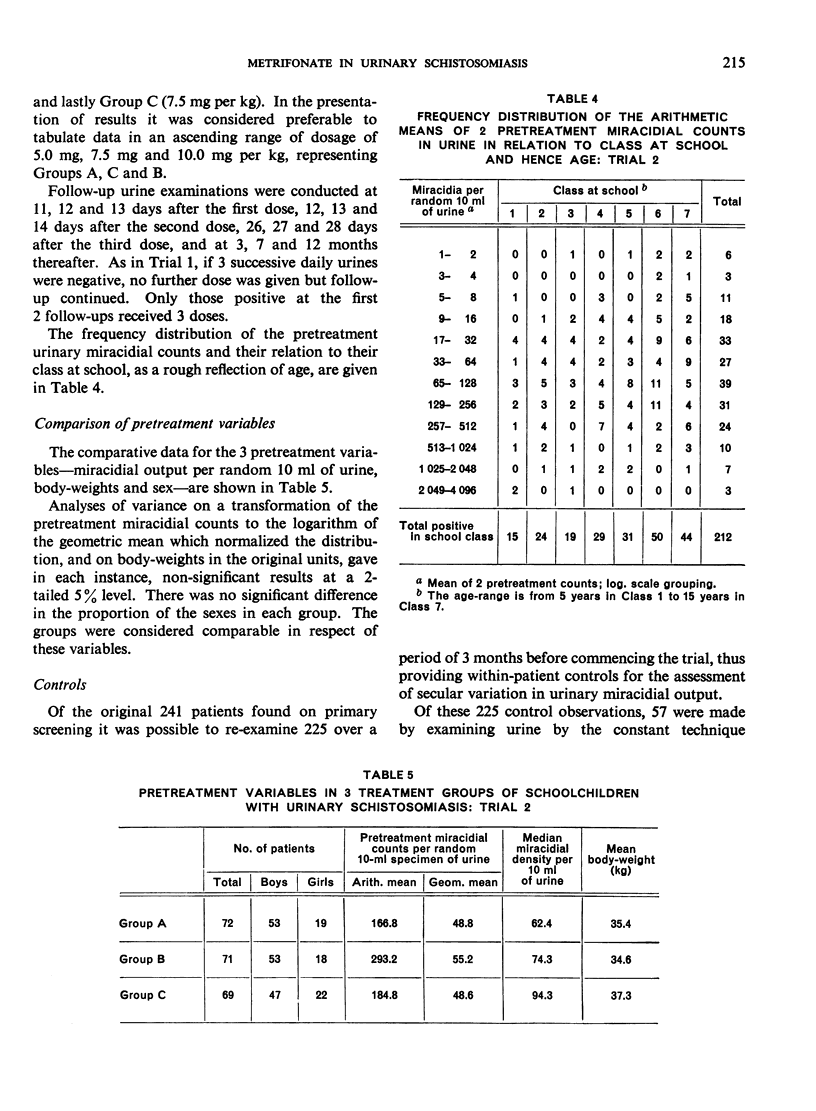
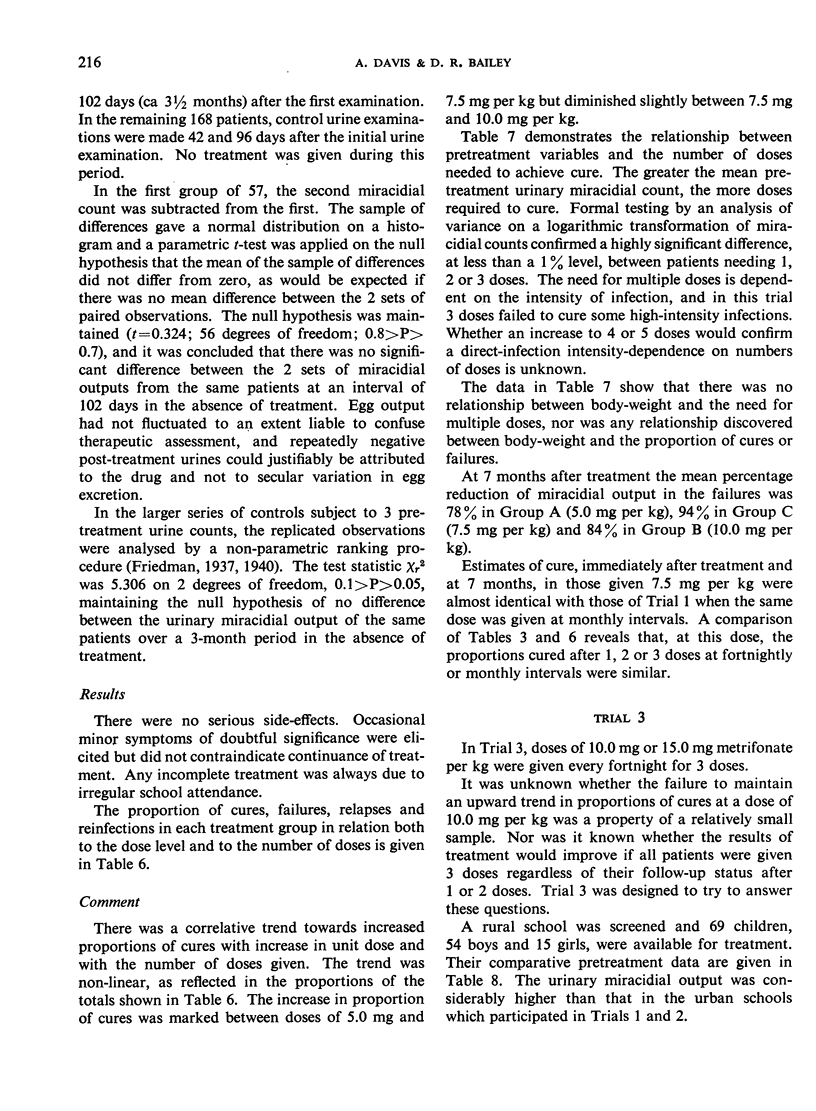
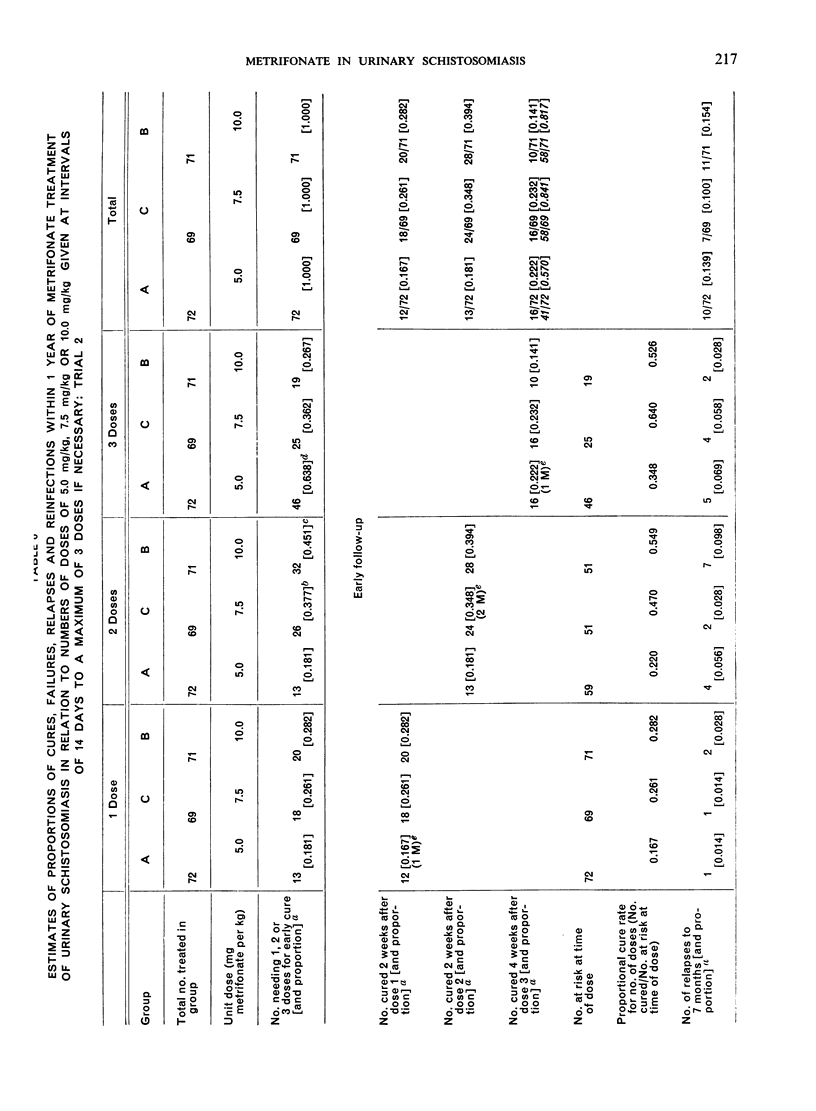
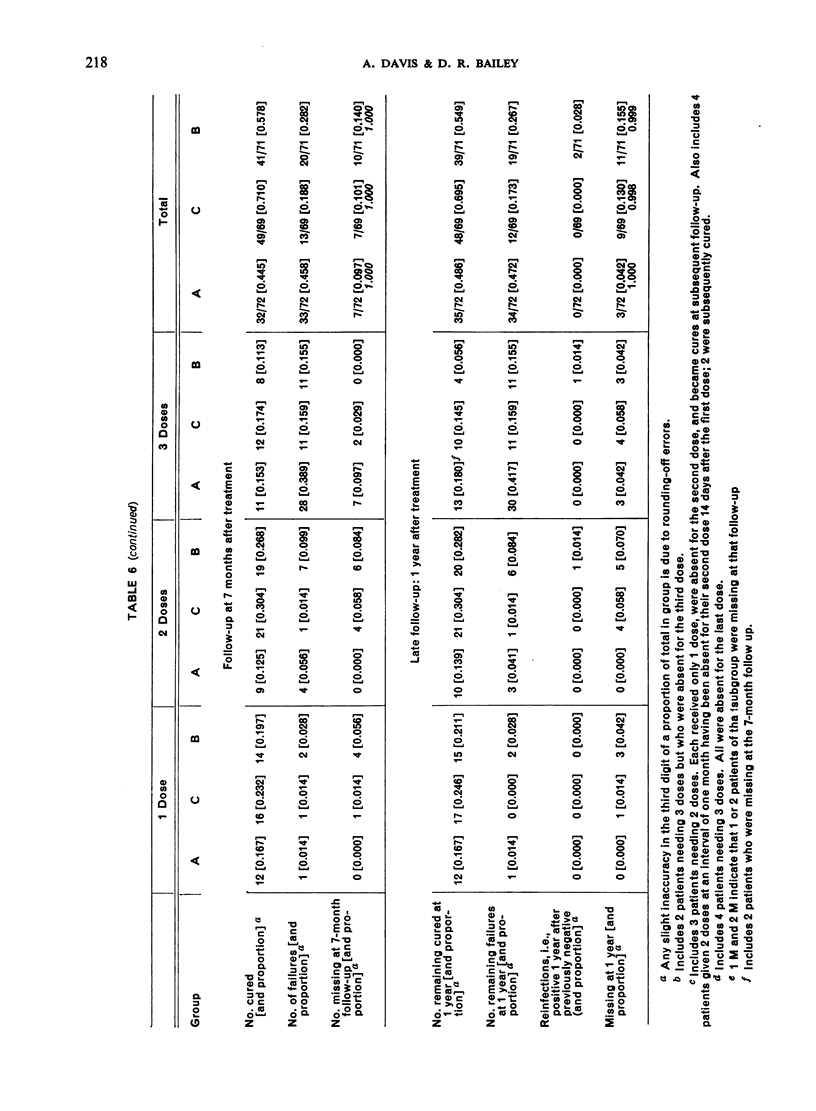

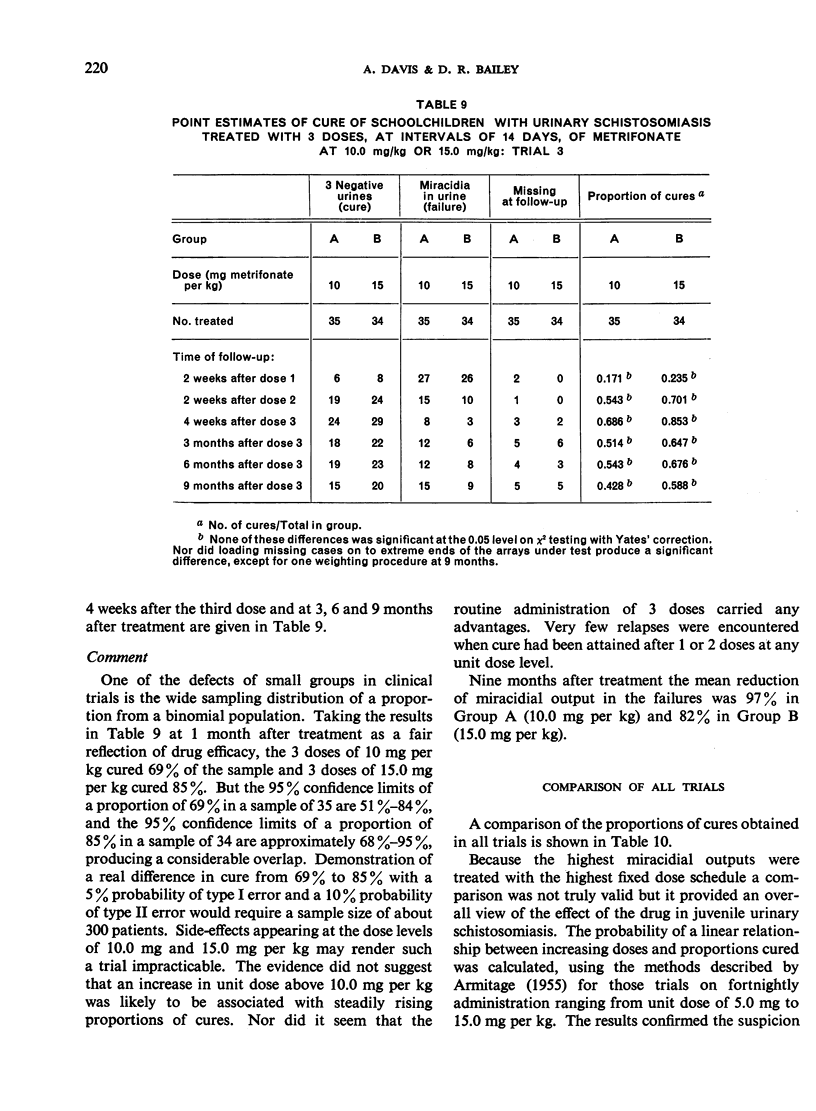
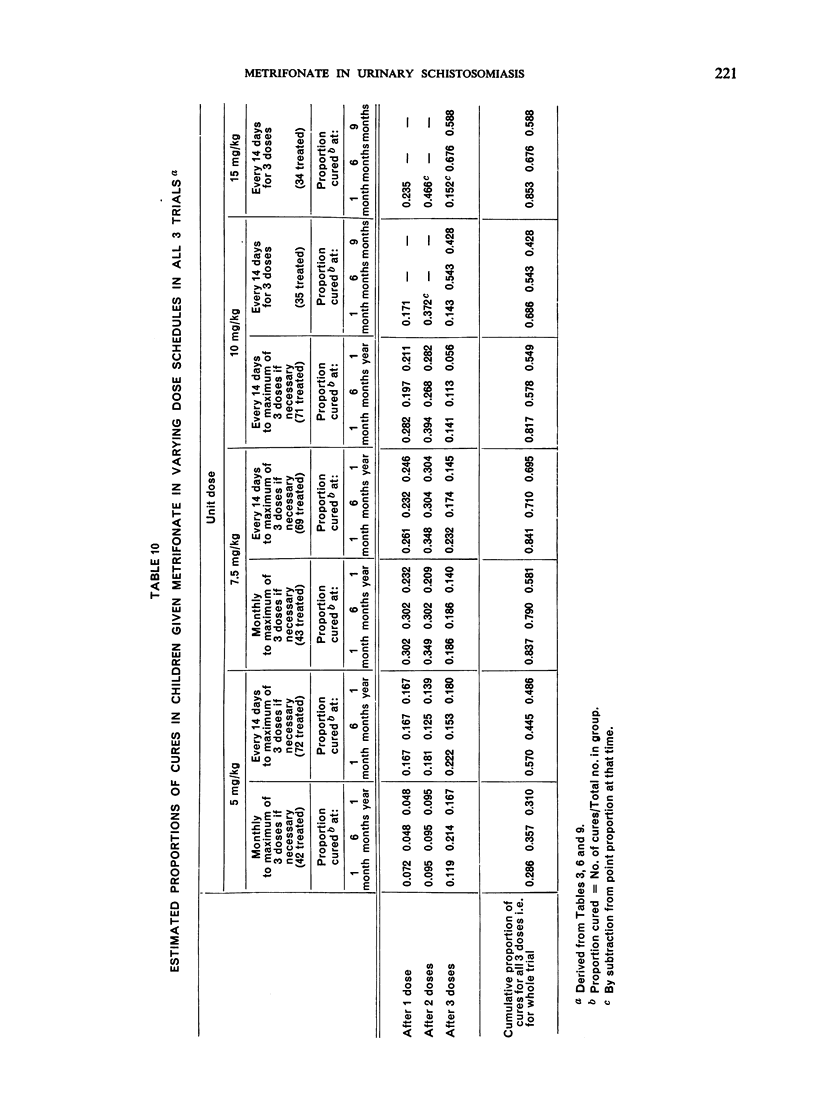
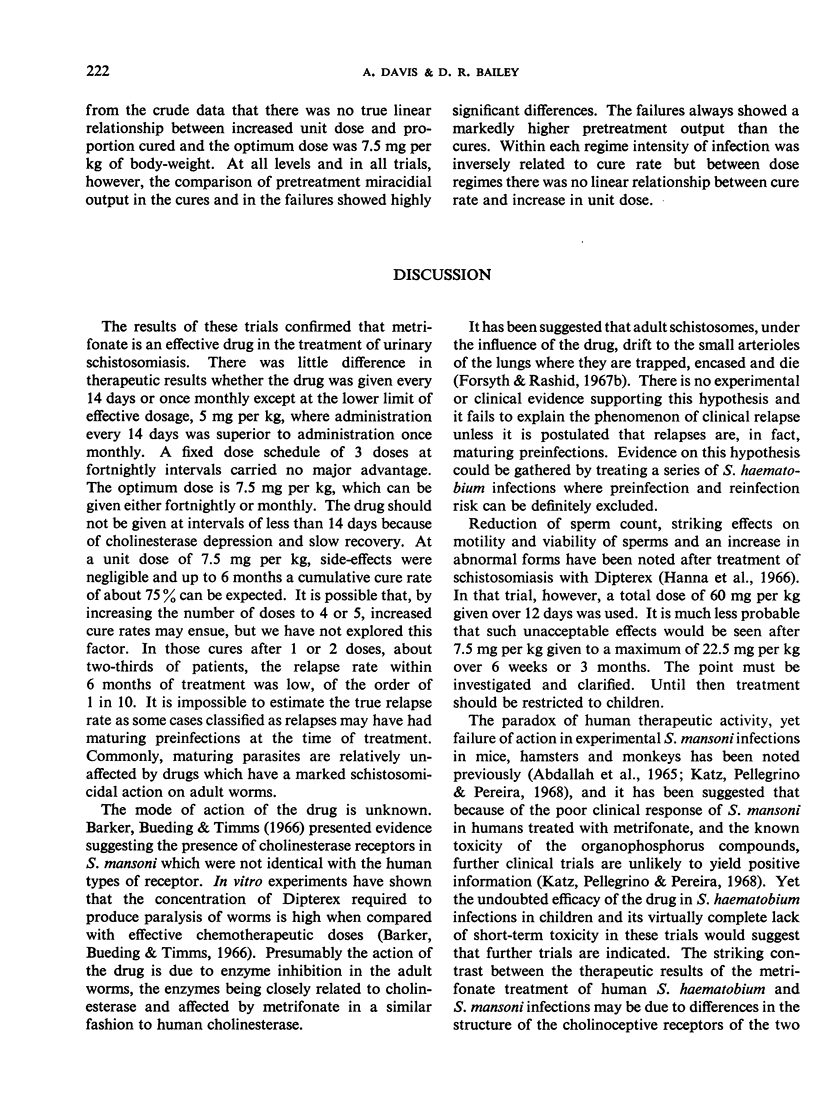
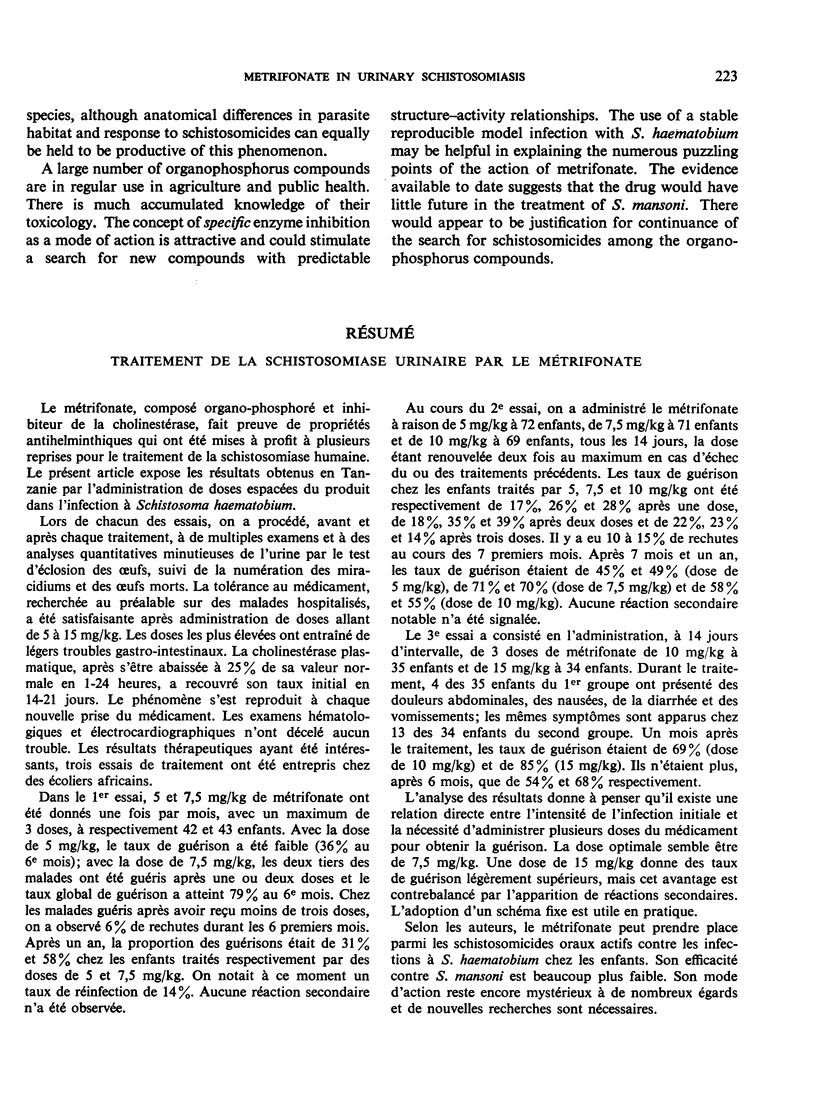
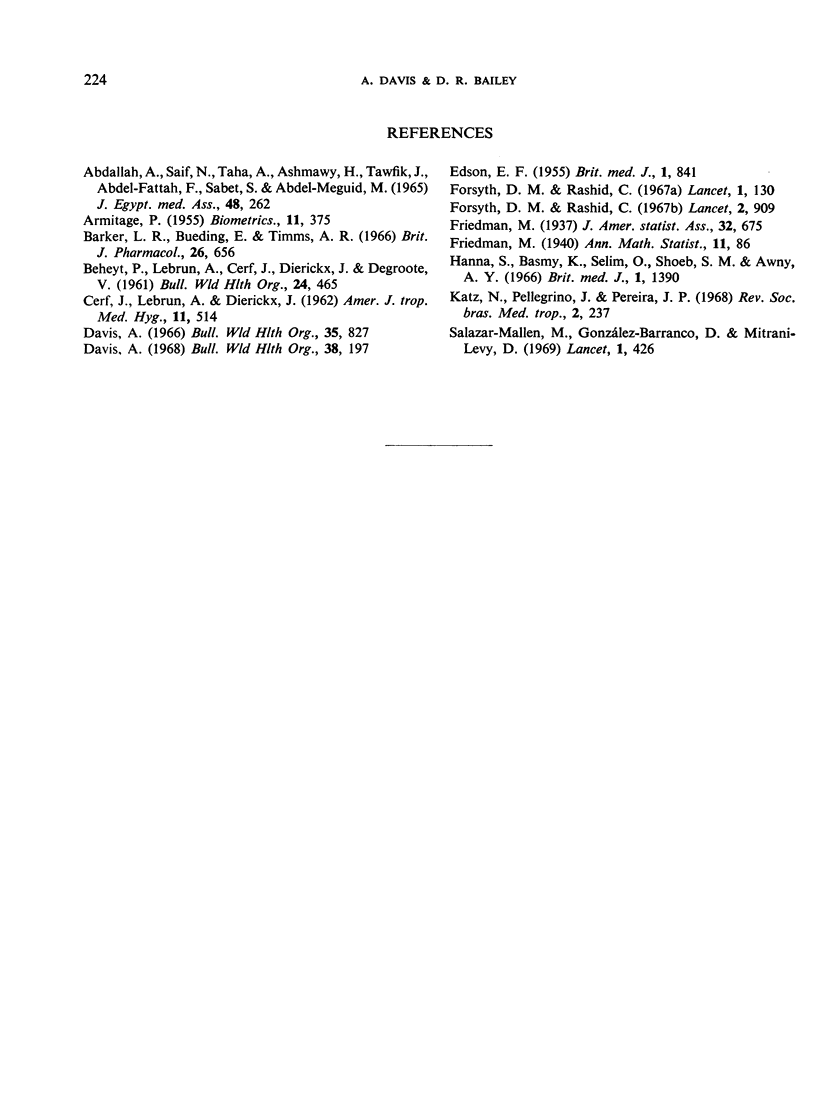
Selected References
These references are in PubMed. This may not be the complete list of references from this article.
- Abdalla A., Saif M., Taha A., Ashmawy H., Tawfik J., Abdel-Fattah F., Sabet S., Abdel-Meguid M. Evaluation of an organo-phosphorus compound, Dipterex in the treatment of bilharziasis. J Egypt Med Assoc. 1965;48(4):262–273. [PubMed] [Google Scholar]
- BEHEYT P., LEBRUN A., CERF J., DIERICKX J., DEGROOTE V. [Study of the toxicity to humans of an organophosphorated insecticide]. Bull World Health Organ. 1961;24:465–473. [PMC free article] [PubMed] [Google Scholar]
- Barker L. R., Bueding E., Timms A. R. The possible role of acetylcholine in Schistosoma mansoni. Br J Pharmacol Chemother. 1966 Mar;26(3):656–665. doi: 10.1111/j.1476-5381.1966.tb01845.x. [DOI] [PMC free article] [PubMed] [Google Scholar]
- CERF J., LEBRUN A., DIERICHX J. A new approach to helminthiasis control: the use of an organophosphorous compound. Am J Trop Med Hyg. 1962 Jul;11:514–517. doi: 10.4269/ajtmh.1962.11.514. [DOI] [PubMed] [Google Scholar]
- Davis A. Field trials of ambilhar in the treatment of urinary bilharziasis in schoolchildren. Bull World Health Organ. 1966;35(6):827–835. [PMC free article] [PubMed] [Google Scholar]
- EDSON E. F. Agricultural pesticides. Br Med J. 1955 Apr 2;1(4917):841–844. doi: 10.1136/bmj.1.4917.841. [DOI] [PMC free article] [PubMed] [Google Scholar]
- Forsyth D. M., Rashid C. Treatment of urinary schistosomiasis with trichlorophone. Lancet. 1967 Oct 28;2(7522):909–912. doi: 10.1016/s0140-6736(67)90230-9. [DOI] [PubMed] [Google Scholar]
- Forsyth D. M., Rashid C. Treatment of urinary schistosomiasis. Practice and theory. Lancet. 1967 Jan 21;1(7482):130–133. doi: 10.1016/s0140-6736(67)91034-3. [DOI] [PubMed] [Google Scholar]
- Hanna S., Basmy K., Selim O., Shoeb S. M., Awny A. Y. Effects of administration of an organo-phosphorus compound as an antibilharzial agent, with special reference to plasma cholinesterase. Br Med J. 1966 Jun 4;1(5500):1390–1392. doi: 10.1136/bmj.1.5500.1390. [DOI] [PMC free article] [PubMed] [Google Scholar]
- Salazar-Mallen M., Gonzalez-Barranco D., Levy D. M. Trichlorophone in onchocerciasis. Lancet. 1969 Feb 22;1(7591):426–426. doi: 10.1016/s0140-6736(69)91408-1. [DOI] [PubMed] [Google Scholar]


